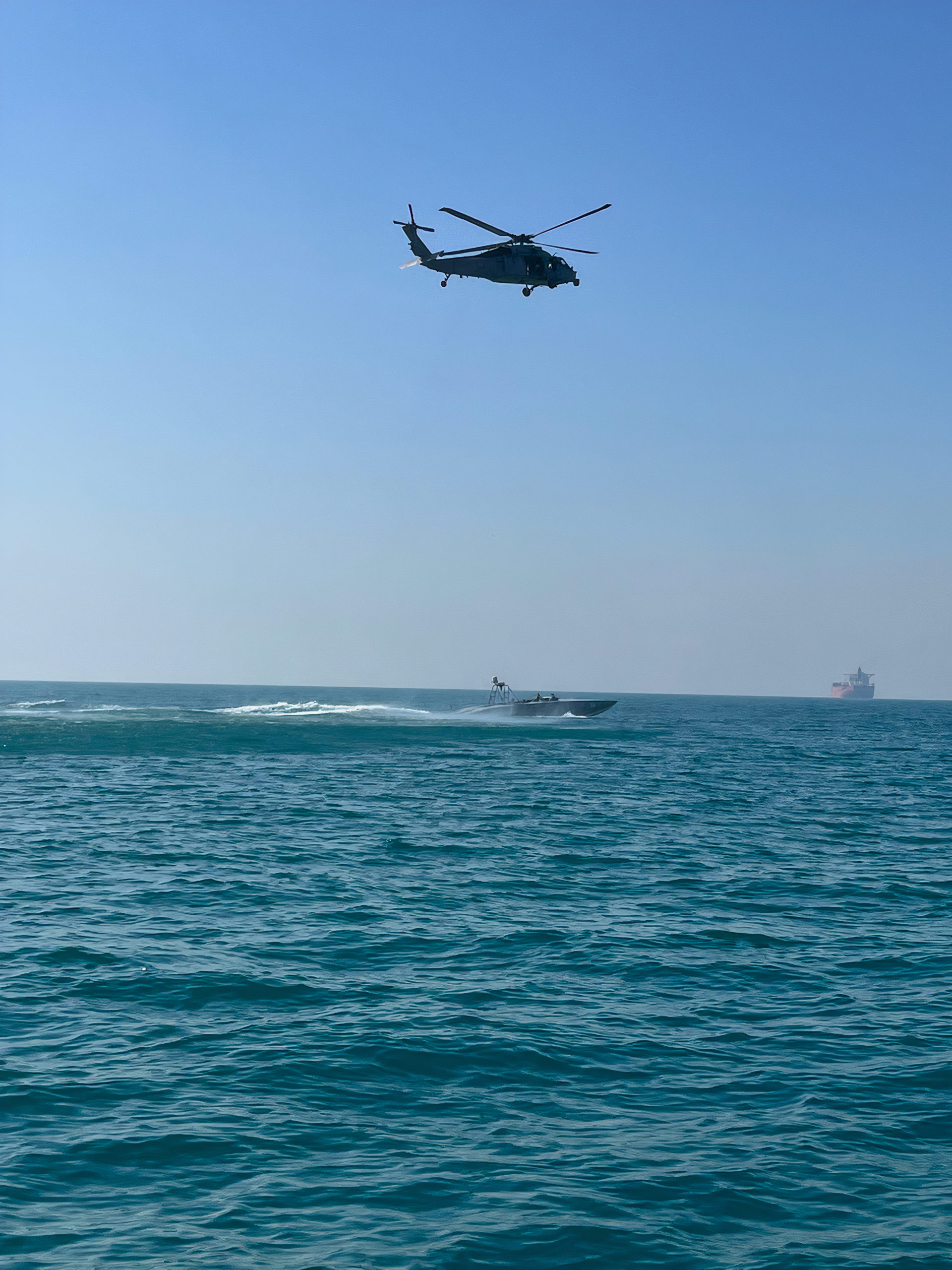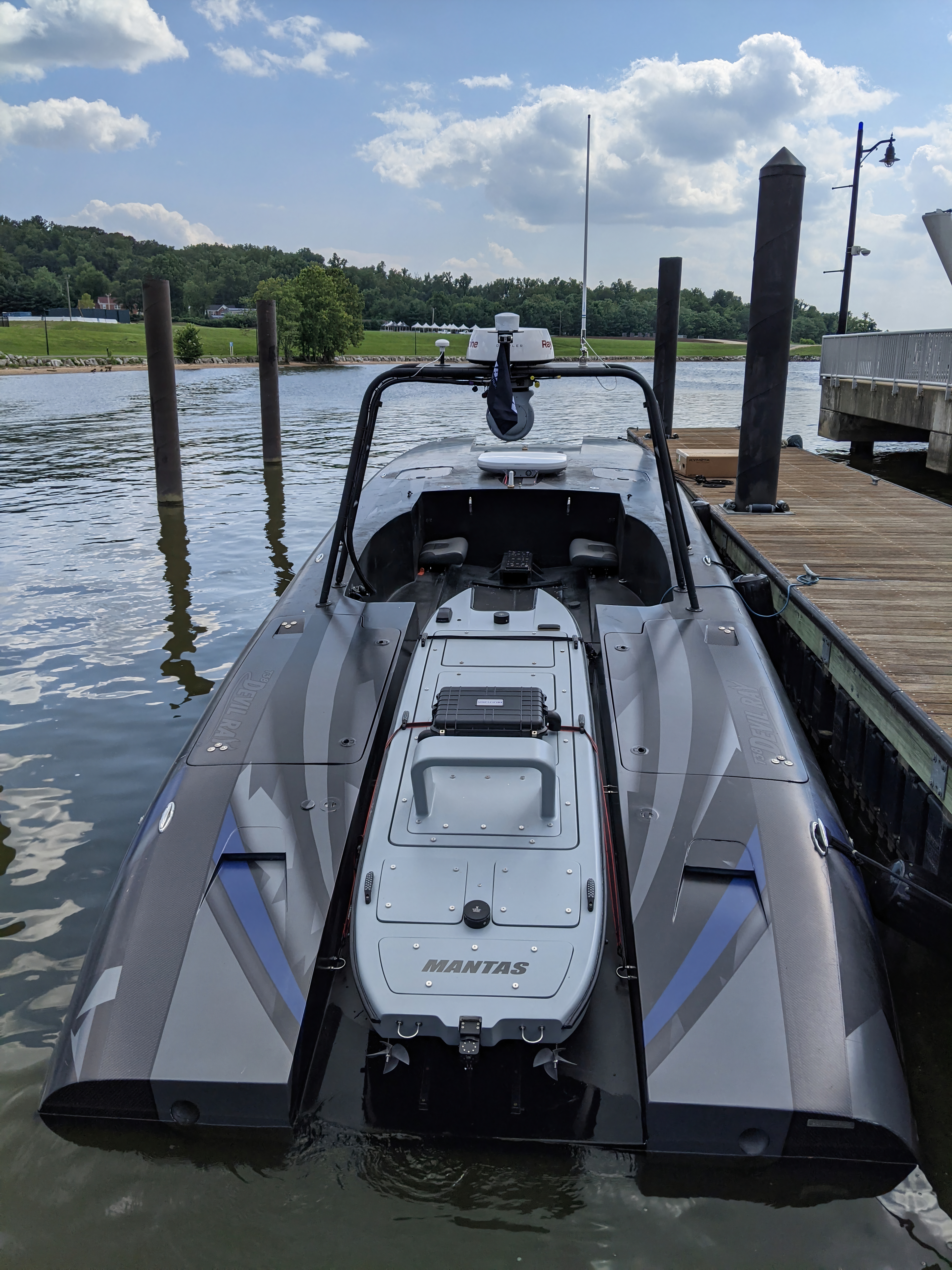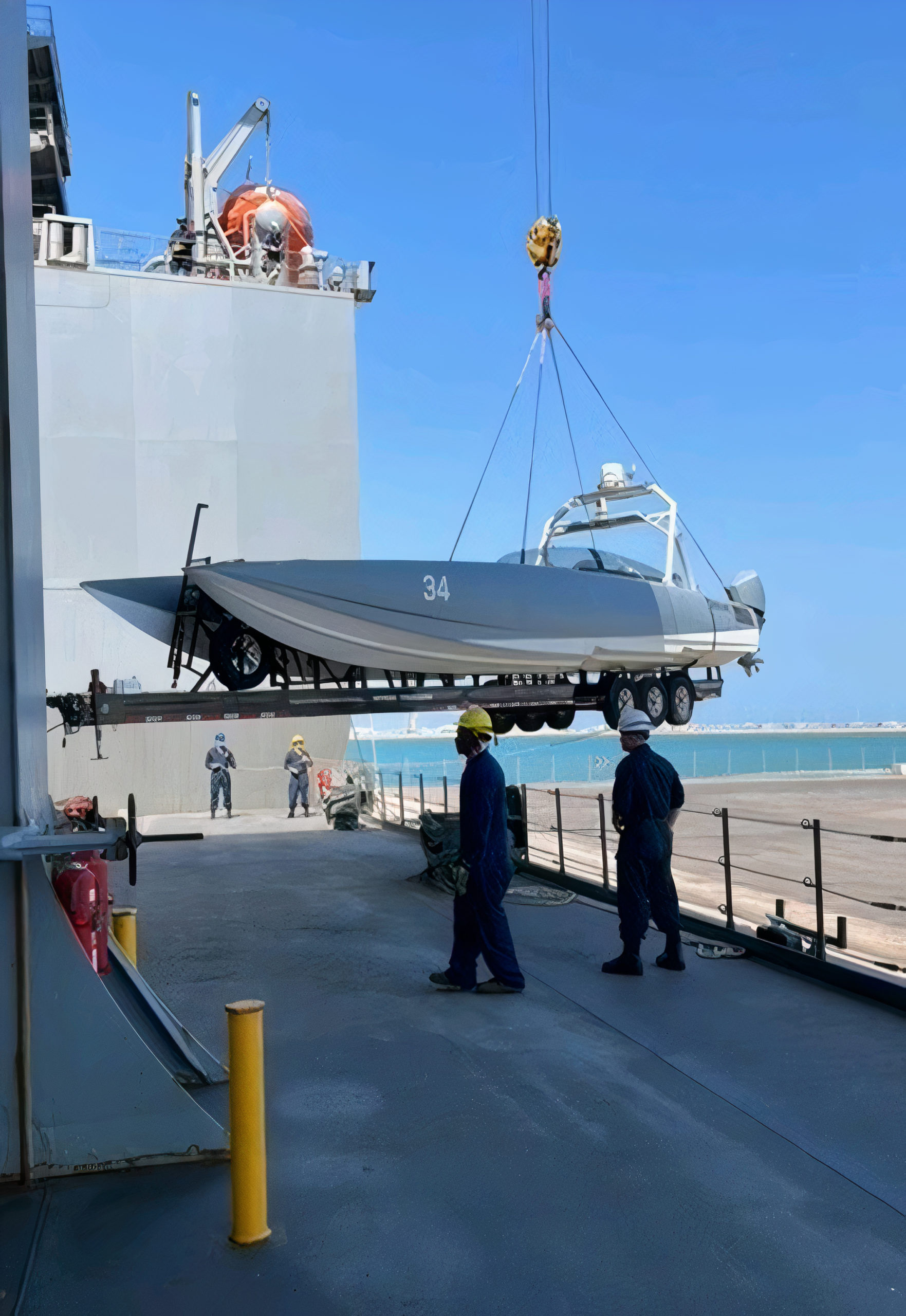By Robbin Laird
In my previous article highlighting the coming of autonomous unmanned surface vessels to the fleet, I underscored: “Autonomous USVs can provide wolfpack deployed ISR or relay systems to enhance the reach and survivability of the fleet in its distributed operational role.
They can also provide an ability to move data to other deployed task forces to provide for enhanced integrability to do so.
“This is about deploying autonomous USVs in a wolfpack to operate payloads appropriate to the mission assigned to them by the commander of the modular task force. This means that the nature of the payloads onboard the USVs and their ability to work as a mission team are key attributes of how an autonomous system wolfpack can contribute to the survivability of the fleet (situational awareness) and lethality (through target acquisition support).”
The particular platforms which I highlighted in the previous articles are a range of scalable catamaran’s which are operated with robust systems software onboard and a variety of communications capability to deliver mission commands to the autonomously operating boats.
That software has been designed from the outset to work with a wide variety of payloads.
The company involved – MARTAC – made the decision from the outset not to design for specific payloads but provide interfaces that could work with adaptation to the operating system across a wide range of payloads.
This has two key advantages.
First, there is a very dynamic process underway in industry and the U.S. and allied militaries to develop payloads for maritime systems. Configuring your boat to a narrowly defined payload would lead to obsolescence.
Second, allies and partners can operate these vessels with their own payloads onboard which means that there is a much wider opportunity to develop national solutions which can enable payload sharing, notably in the ISR domain.
The MARTAC boats – notably the MANTAS 12-foot boat and the DEVIL RAY 38-foot boat – have demonstrated in many U.S. and allied naval exercises a wide variety of payloads which can operate from their boats and deliver specific mission capabilities.
I will focus on four such payload-to-mission examples but will leave out where and when these examples were demonstrated.
ISR Payloads
The most obvious area where a wolfpack of USVs working together could contribute significantly to fleet security, safety and operational reach for situational awareness and targeting solutions, is with regard to ISR.
In the past several years, MANTAS has been used in a variety of exercises and some initial operations to provide for both SA and targeting solutions for the fleet.
A key need for the fleet is clearly enhanced SA when in critical choke points threats can increase.
For capital ships, this comes clearly when they are at anchor or ingressing/egressing a harbor.
The MANTAS has demonstrated the ability to provide core SA for security and safety in this situation.
Given that the form factor of the boats is such they can operate from standard navy RHIB launchers, and can be configured to fit into various Naval standard launch systems as well, MANTAS is fleet ready to do this mission.
Target Tracking and Target Destruction
In one exercise, the DEVIL RAY has been deployed with the MANTAS in a nested doll configuration or a situation in which the smaller MANTAS is embedded into the DEVIL RAY.
Onboard was a UAV that could deliver the lethal element of following up after target identification.
The MANTAS was launched from the DEVIL RAY and deployed into the mission area.
The MANTAS identified the target, and there was follow-up verification of the target by a UAV launched from shore. After target identification, a missile was launched from the DEVIL RAY and proceeded on course to destroy the maritime target.
The MANTAS returned to the DEVIL RAY and they then were given their coordinates to return to the desired landing area.
Working MEDEVAC in a New Way
In another exercise, the extraction of special forces from a beach was managed by the MANTAS and the DEVIL RAY. In the exercise, there were two “injured” special forces soldiers who needed medical attention.
The DEVIL RAY launched the MANTAS with a sled attached to reach the shore.
The “injured” special forces soldiers were put onto the MANTAS and the sled and joined by one uninjured special force solider on both the MANTAS and the sled.
The MANTAS and the sled went back to the DEVIL RAY where the injured soldiers received triage from medics onboard the DEVIL RAY. After initial triage, a helicopter lifted the soldiers off of the DEVIL RAY and the DEVIL RAY with the MANTAS “nested” returned to the desired landing area.
Working Search and Rescue: Aiding a Distressed Diver
In this exercise, four divers were involved, with one playing the role of the distressed diver.
The T-38 Devil Ray launched the Mantas T-12. The T-12 then went to the distressed diver who grabbed onto the T-12 and the T-12 then went back to the Devil Ray.
When the diver reached the Devil Ray, the diver was manually placed in a basket for movement by helicopter to the shore.
The diver was replaced by a dummy for the last piece of this recovery and the transfer to the helicopter.
But this exercise suggests a broader range of options.
The exercise clearly demonstrated the possibility of a search and rescue scenario in which the autonomous asset could operate in weather too dangerous for manned operations.
And suggested as well that the Devil Ray being able because it “can operate beyond human capability” to get to the location of a sinking ship much faster than a manned asset.
There are some key operational capabilities this maritime autonomous system has which allow these kinds of missions to be executed quite differently from a manned platform or a remotely piloted UAS system.
I will turn to those capabilities and their consequence for mission options in the next piece.
The featured photos are credited to MARTAC and show either the MANTAS or the DEVIL RAY in various global locations to participate in exercises with either U.S. or allied defense forces.
Building a Platform for Wolfpack Unmanned Surface Vessel Kill Web Operations
For a broader discussion of the coming of autonomous systems, see the articles in chapter four of our book published earlier this year:






